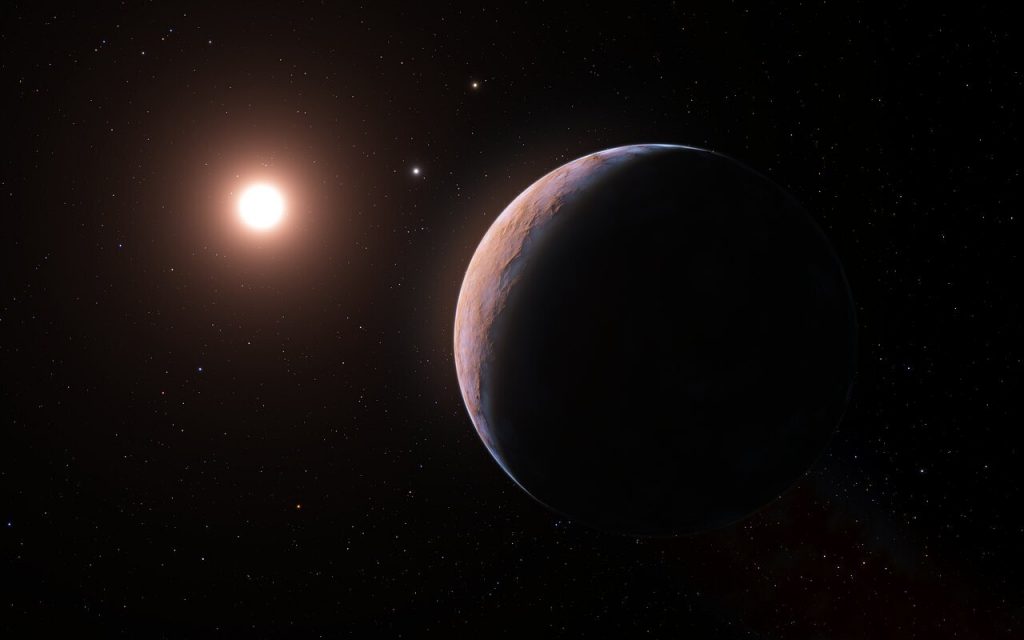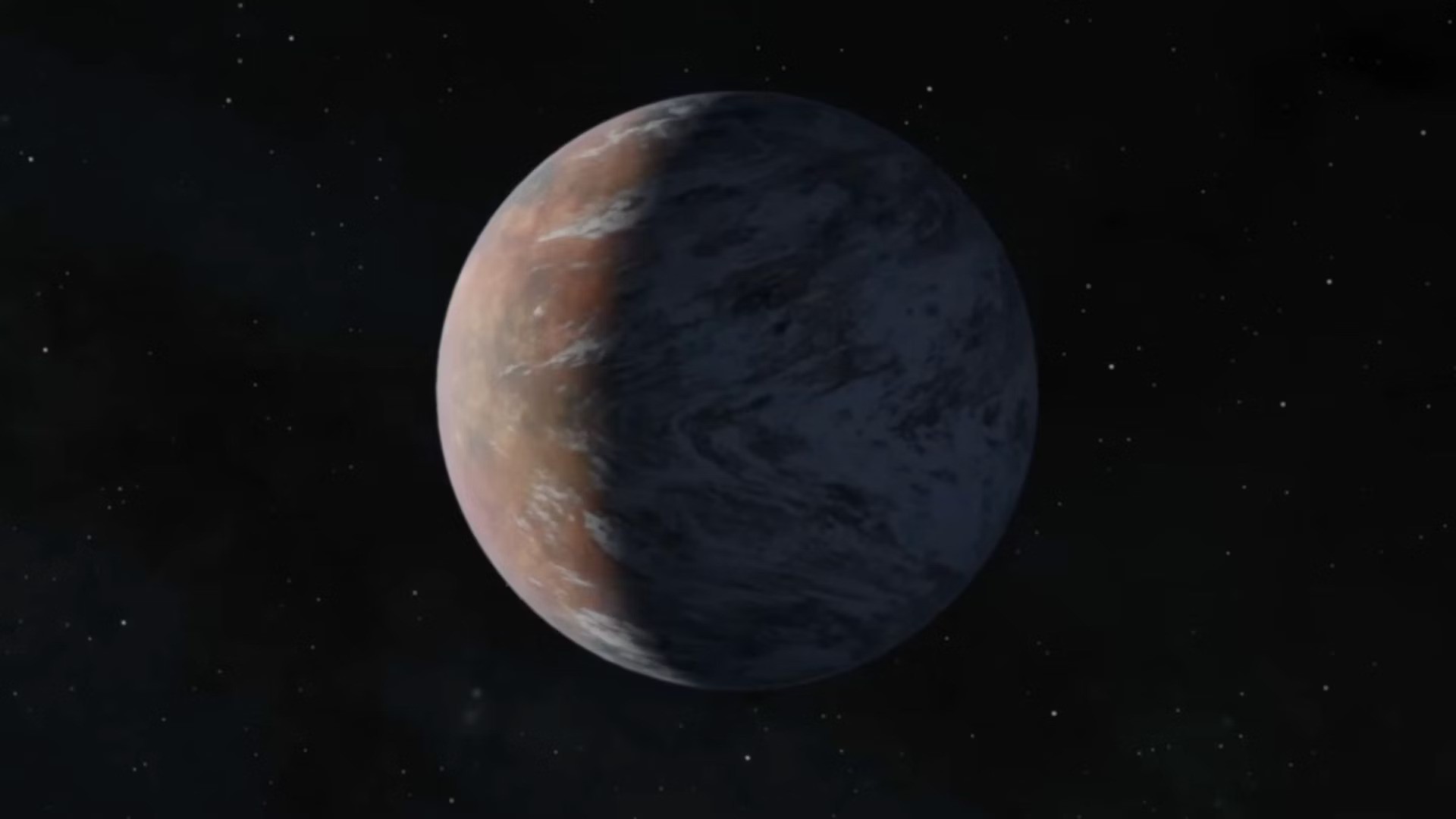Astronomers Discover Potential Habitable Super-earth
Astronomers discover potential habitable super-earth orbiting an M-dwarf, or red dwarf, star located approximately 137 light-years away. Designated as TOI-715b, this planet boasts a radius about 1.55 times that of Earth's.
Author:Karan EmeryReviewer:Daniel JamesFeb 06, 202416K Shares213.9K Views

Astronomers discover potential habitable super-earthorbiting an M-dwarf, or red dwarf, star located approximately 137 light-years away. Designated as TOI-715b, this planet boasts a radius about 1.55 times that of Earth's.
Remarkably, it resides within the habitable zone of its host star. Also, another potential planet has been identified in the same system. If verified, this candidate would rank as the smallest habitable zone planet that TESS has so far found.
TOI-715 is a typical red dwarf star, with roughly one-quarter the mass and radius of our Sun. TOI-715b orbits closely to its parent star, completing a single revolution in 19 days. Despite the star's diminished luminosity compared to the Sun, this places the Super-Earth comfortably within the conservative habitable zone.
Recently published in the Monthly Notices of the Royal Astronomical Societyis a groundbreaking discovery titled "A 1.55 Earth-radius habitable-zone planet hosted by TOI-715, an M4 star near the ecliptic South Pole." The lead author, Georgina Dransfield, hails from the School of Physics & Astronomy at the University of Birmingham.
The concept of the habitable zone, while widely used, is admittedly imprecise in pinpointing planets with potential for liquid water. Factors such as stellar spectral type, planetary albedo, mass, and atmospheric cloudiness can blur its boundaries, leading to contradictions.
In contrast, the notion of a conservative habitable zone (CHZ), introduced by Kopparapu et al. in a 2014 paper, offers more clarity. It defines a region around a star where a rocky planet receives solar insolation between 0.42 and 0.842 times that of Earth. Any rocky planet within this range is considered within the CHZ, irrespective of its distance from the star.
The discovery of a Super-Earth within a star's CHZ is a cause for great excitement. It ignites our curiosity about distant worlds and the tantalizing prospect of finding extraterrestrial life. Such planets hold more allure than bodies like Hot Jupiters, which lack the conditions necessary for liquid water or life. Even the hardiest extremophiles would find the hostile environment of a Hot Jupiter uninhabitable.
As astronomers continue to explore the vast expanse of exoplanets, they've begun to discern intriguing patterns within this diverse population. One such observation is the presence of a notable void in the small planet category, specifically between 1.5 and 2 Earth radii.
This gap, recognized as the small planet radius gap or the sub-Neptune radius gap, is alternatively termed the Fulton gap or the photoevaporation valley. Remarkably, the newly discovered TOI-715b, with a radius of 1.55 Earth radii, falls squarely within this gap.
The existence of this gap challenges the notion that no planets form within this range. Instead, it suggests a fascinating process wherein planets initially form larger and subsequently shed mass, ultimately settling into this intermediate size. This phenomenon sheds light on the mechanisms governing planetary evolution.
A prevailing hypothesis posits that planets within this gap commence their existence at larger sizes but undergo a process known as photoevaporation, wherein their host stars gradually strip away their outer layers, causing them to shrink. Consequently, the term "photoevaporation valley" is often employed to describe this phenomenon.
Despite its intriguing implications, there remains considerable uncertainty surrounding the nature of this valley and the mechanisms driving photoevaporation. Consequently, astronomers are keen to conduct further investigations into planets situated within this enigmatic region, hoping to glean insights into the intricate processes shaping planetary systems.
“„The importance of the radius valley lies in its potential to teach us about planetary formation and post-formation evolution, and hence, planets inside this gap are crucial in furthering our understanding of the factors that sculpt it.- The authors
The existence of a radius gap around M-dwarfs is currently uncertain. Recent research by Luque & Pallé (2022) suggests that instead of a radius gap, there might be a density gap among M-dwarf planets. This could imply a division between two populations of small planets: rocky and water worlds.
Whether it's a radius gap or a density gap, TOI-715b holds significant potential for shedding light on exoplanets, photoevaporation, and the distribution of exoplanets around red dwarfs. However, uncovering its insights requires more thorough and detailed observations, making this Super-Earth particularly intriguing for researchers. Since the advent of exoplanet discovery, scientists have eagerly anticipated the operational launch of the James Webb Space Telescope for its potential to further enhance our understanding of these distant worlds.
In their paper, the authors express the anticipation of the JWST era, heralding a new age of intricate exoplanetary atmospheric analysis. The JWST can scrutinize the spectra of exoplanet atmospheres, unraveling their composition. However, despite its immense power, certain targets offer superior opportunities for transmission spectroscopy. TOI-715b stands out as a prime candidate due to its proximity to its star.
Orbiting a diminutive red dwarf with a mere 19-day orbital period, the exoplanet's transits occur frequently and with greater depth. Consequently, the JWST requires minimal time to observe the planet's atmosphere, maximizing the efficiency of the space telescope's utilization.
“„In the context of atmospheric characterization by transmission spectroscopy, bright, nearby M dwarfs are ideal planetary hosts as small temperate planets will transit frequently, enabling high signal-to-noise detections of atmospheric features with fewer hours of telescope time.- The authors
Determining whether TOI-715b is habitable remains a matter of speculation without the detailed spectroscopic capabilities of the JWST. While the exoplanet resides within the conservative habitable zone, this alone provides limited insight. Nevertheless, there are promising indicators to consider.
The authors note that TOI-715 is slightly older than our Sun at 6.6 billion years old and shows only a low level of magnetic activity. This likely accounts for the absence of flaring in the TESS light curves compared to younger M-dwarfs, known for their intense flaring activity that could potentially sterilize planets and strip away atmospheres—a phenomenon potentially linked to the exoplanet photoevaporation valley.
Additionally, there's a candidate planet orbiting TOI-715, designated as TIC 271971130.02, awaiting confirmation. If confirmed, it would be the smallest habitable zone planet that TESS has yet to find, but additional observations are necessary for confirmation.
The TOI-715 system presents an enticing opportunity for further investigation. While TOI-715b awaits its turn for JWST atmospheric analysis, the potential confirmation of another habitable zone planet within the system adds to its significance.
Astronomers' enthusiasm will undoubtedly escalate if JWST observations support TOI-715b's habitability. Furthermore, these studies may contribute valuable insights into the radius or density gap, enhancing our comprehension of exoplanetary systems.

Karan Emery
Author
Karan Emery, an accomplished researcher and leader in health sciences, biotechnology, and pharmaceuticals, brings over two decades of experience to the table. Holding a Ph.D. in Pharmaceutical Sciences from Stanford University, Karan's credentials underscore her authority in the field.
With a track record of groundbreaking research and numerous peer-reviewed publications in prestigious journals, Karan's expertise is widely recognized in the scientific community.
Her writing style is characterized by its clarity and meticulous attention to detail, making complex scientific concepts accessible to a broad audience. Apart from her professional endeavors, Karan enjoys cooking, learning about different cultures and languages, watching documentaries, and visiting historical landmarks.
Committed to advancing knowledge and improving health outcomes, Karan Emery continues to make significant contributions to the fields of health, biotechnology, and pharmaceuticals.

Daniel James
Reviewer
Daniel James is a distinguished gerontologist, author, and professional coach known for his expertise in health and aging.
With degrees from Georgia Tech and UCLA, including a diploma in gerontology from the University of Boston, Daniel brings over 15 years of experience to his work.
His credentials also include a Professional Coaching Certification, enhancing his credibility in personal development and well-being.
In his free time, Daniel is an avid runner and tennis player, passionate about fitness, wellness, and staying active.
His commitment to improving lives through health education and coaching reflects his passion and dedication in both professional and personal endeavors.
Latest Articles
Popular Articles
